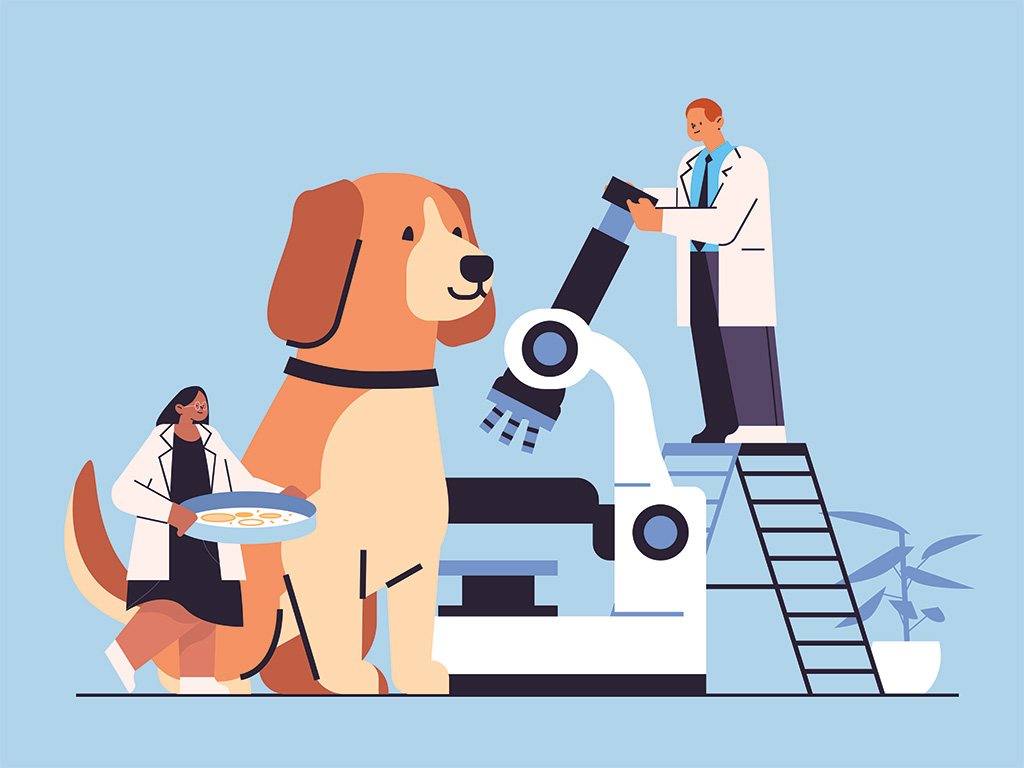New method for detecting chronic GI disease in dogs

Credit: ProStockStudio/shutterstock.com
A research team led by the Texas A&M School of Veterinary Medicine & Biomedical Sciences’ (VMBS) Gastrointestinal Laboratory (GI Lab) has validated a new diagnostic index that will help veterinarians assess chronic GI dysfunction in dogs and may hold the key to diagnosing and treating GI disease in the future.
In a recently published article in the scientific journal Animals, GI Lab researchers tested their Dysbiosis Index (DI) using the microbiomes of 296 dogs to demonstrate that their index is a valid diagnostic tool for distinguishing between acute and chronic GI dysfunction and detecting non-GI disorders.
The DI has now been licensed through Texas A&M and IDEXX Laboratories and is being offered through the GI Lab and IDEXX.
“We are delighted to offer clinicians a fast, cost-effective and reliable test to evaluate the health of the intestinal microbiome in dogs,” said Dr. Chi-Hsuan Sung, first author on the article and a member of the GI Lab team.
The DI works by identifying dysbiosis — the loss of good, healthy bacteria in the gut microbiome — by tracking the levels of various bacteria over time.
“The Dysbiosis Index can accurately predict total shifts in the microbiome,” said Dr. Jan Suchodolski, associate director of research for the GI Lab. “Doing this helps us define what is normal and abnormal for gut microbiome health so we can see when a patient’s gut system has shifted away from normal.”
Because more than 10% of all new veterinary visits are related to GI disease in both dogs and cats, knowing when a patient’s microbiome has shifted away from normal will help veterinarians decide whether they have acute or chronic GI dysfunction, which require different management techniques.
“One of the biggest challenges in microbiome research is defining what’s normal and what’s abnormal,” Suchodolski said.
“Too often, researchers use techniques and technologies that are not reproducible, which means other researchers won’t be able to repeat their process,” he said. “For example, genome sequencing, which maps out the DNA of an organism, is a popular tool that scientists use to see what kinds of bacteria are part of the microbiome. But that’s more of a discovery tool. If two researchers use sequencing on the same set of samples, they may get different results. It’s not accurate enough to use as a diagnostic tool.”
Being able to tell the difference between normal and abnormal bacteria health can make a big difference when veterinarians are trying to decide whether a patient has acute or chronic GI dysfunction.
“You can imagine the microbiome sort of like a landscape that you might see when you look out your window,” Suchodolski said. “Acute GI dysfunction is like a storm that blows through and knocks over a few trees, but the landscape will recover. However, chronic GI dysfunction is much more destructive; it results in permanent changes.”
Chronic GI dysfunction, which affects approximately 2% of dogs, also requires a completely different clinical treatment approach.
“Once a patient develops chronic GI dysfunction, they experience permanent changes to their GI tract,” he said. “The disease is probably going to be around for many years or even be lifelong. Instead of curing it, we look at ways to manage the disease through diet and other tools.
“Having this index will help experts better assess what kind of GI dysfunction a patient has so they can choose the right treatments and help set expectations for the patient’s caregivers.”
The GI Lab was able to validate the DI in part thanks to the Purina PetCare Research Excellence Fund, a five-year partnership with Nestlé Purina PetCare Global Research designed to enhance diagnostic and interventional research on the gut microbiome.
“We’re grateful to Purina PetCare for working with us so that we can improve the lives of patients in new ways,” Suchodolski said. “It’s important to the GI Lab researchers to have research partners who share our values.”

